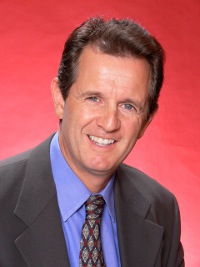 By David Lyell (left), LAUSD teacher
By David Lyell (left), LAUSD teacher
A report published this month by UC Berkeley economist Jesse Rothstein raises serious ethical questions about the objectivity of an analysis of “value-added” models by The Bill and Melinda Gates Foundation.
In his report, “Review of Learning About Teaching,” Rothstein concludes that The Gates Foundation’s “Measures of Effective Teaching” (MET) Project contains, “troubling indications that the Project’s conclusions were predetermined.” Rothstein asserts that “the Gates Foundation has widely circulated a stand-alone policy brief (with the same title as the research report) that omits the full analysis, so even careful readers will be unaware of the weak evidentiary basis for its conclusions.”
To promote “value-added” as a measure of teacher effectiveness, The LA Times hired Richard Buddin, a professor at UCLA, and paid him an undisclosed sum to conduct a statistical analysis of student test data. Buddin has himself been rated as ineffective by his own students on a website where UCLA students rate teachers.
In August 2010, LA Times reporters Jason Felch, Jason Song, and Doug Smith wrote a host of articles touting the benefits of “value-added” as a way of measuring teacher effectiveness, along with a database rating teachers.
On August 31, 2010, LAUSD Deputy Superintendent John Deasy proposed for value-added measures on tests to account for 30 percent of teacher evaluations. Six Board Members all voted for the proposal, with one dissent: School Board Member Marguerite LaMotte. The proposal now faces a major obstacle. It must be agreed to as part of collective bargaining negotiations in order for it to take effect.
Superintendent Cortines has said he wants LAUSD teachers to take seven furlough days for the 2011-12 school year, despite the fact that the LAUSD spends $100 million on non-mandated standardized tests — that is, testing not required by law — and $43 million on the eight mini-district offices.
I recently spoke to Deputy Superintendent John Deasy, and got his reaction to this story.
To critics like myself who think value-added should not at all be a component of teacher evaluations, Deasy said, “I take that at face value, and say I appreciate your position. I respectfully disagree.” He continued, “There will be margins of error. No question about that,” adding, “when people say that it’s ineffective, I think the issue is, for me, how do you use a balanced set of multiple measures to take a look at teacher effectiveness?”
Conceding that value-added models are imperfect, and reportedly have a plus or minus error of 45 points, and a teacher’s livelihood could be at stake, Deasy said it shouldn’t be the only measure of teacher effectiveness.
“A good observation by a well-trained principal,” said Deasy. “I believe that should be the majority indicator.”
When asked about the assessments of Buddin by his students on the Bruin website, where some students rated Buddin as “ineffective” and “boring,” Deasy responded, “I do think it matters how students perceive the learning experience with a teacher. Once again, I don’t think it is the only metric that should be used.”
I stated one of my objections to value-added, namely, that it perpetuates the demonization of teachers. I said, “I wish we did a better job supporting teachers. 50 percent of them quit within the first five years, even more so at charter schools. And part of it is because there is just a lack of support for teachers in the classroom.” Deasy responded: “I happen to agree with you completely on that. We have an enormous obligation to support teachers.”
When I proposed that cuts should be kept away from the classroom, especially given that LAUSD spends $100 million on non-mandated testing, and $43 million on the eight mini-district offices, Deasy responded, “My response to that is going to have to be, given the budget, as I read it, and given what has happened since the governor has taken office, all of those areas are going to have to be examined for further reduction.”
When pressed on this, and asked, “So you want to keep cuts away from the classroom?” Deasy responded, “Absolutely. We’ve already cut too much.” He added that the last cuts should be in the classroom.
Whether Deasy will stick to his word, and keep cuts away from the classroom, as stated, remains to be seen. How much he will stick to a deeply flawed methodology of evaluating teachers, also known as “value-added,” also remains to be seen.
Phone calls and emails seeking comment from UCLA instructor Buddin, LA Times reporters Felch, Song, Smith, and representatives from The Bill and Melinda Gates Foundation have not been returned. Additional phone calls and emails seeking comment from the following proponents of using value-added as a component in teacher evaluations have also not been returned: LAUSD Superintendent Ramon Cortines, LAUSD School Board Members Monica Garcia, Yolie Flores, Tamar Galatzan, Nury Martinez, Richard Vladovic, and Steve Zimmer, Los Angeles Mayor Antonio Villaraigosa, and US Education Secretary Arne Duncan.
To read Jesse Rothstein’s Rothstein’s critique of The Gates’ Foundation’s Measures of Effective Teaching Project, click here.
What do you think about Deasy’s position on value-added assessments? Let us know in the comments below.
Read more from David Lyell at davidlyell.blogspot.com.









 By Sujata Bhatt, a teacher at Grand View Elementary
By Sujata Bhatt, a teacher at Grand View Elementary




